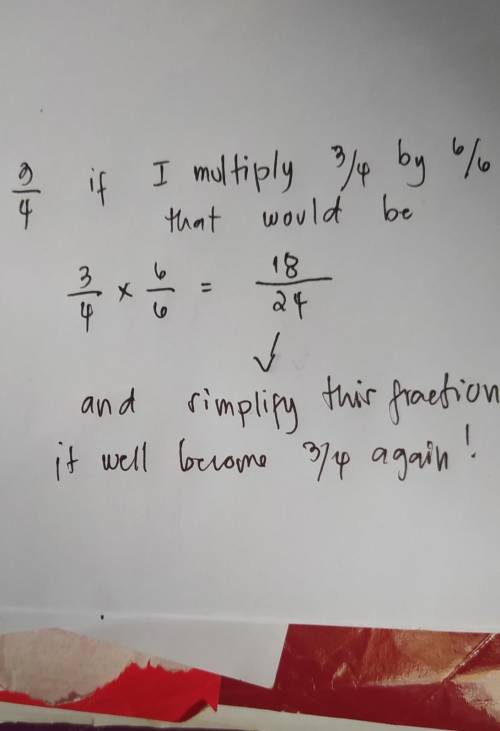
Physics, 11.04.2021 08:50, Alayna1037
Explain why you can multiply both the numerator and denominator by the same number

Answers: 1
Other questions on the subject: Physics

Physics, 21.06.2019 19:20, Obeilskzexal
Aferris wheel is a vertical, circular amusement ride with radius 9 m. riders sit on seats that swivel to remain horizontal. the ferris wheel rotates at a constant rate, going around once in 9 s. consider a rider whose mass is 56 kg. at the bottom of the ride, what is the perpendicular component of the rate of change of the rider's momentum? at the bottom of the ride, what is the vector force exerted by the seat on the rider?
Answers: 1

Physics, 21.06.2019 21:50, jferdi2005
When applying kirchhoff's rules, one of the essential steps is to mark each resistor with plus and minus signs to label how the electric potential changes from one end of the resistor to the other. the circuit in the drawing contains four resistors, each marked with the associated plus and minus signs. however, one resistor is marked incorrectly. which one is it?
Answers: 1

Physics, 22.06.2019 01:30, chandranewlon
Ablock of mass 1.5 kg slides down an inclined plane that has an angle of 15. if the inclined plane has no friction and the block starts at a height of 3 m, how much kinetic energy does the block have when it reaches the bottom? acceleration due to gravity is g = 9.8 m/s2. a. 6.8 j b. 50.9 j c. 0 j d. 44.1 j
Answers: 1

Physics, 22.06.2019 07:30, anonymous1813
Some material consisting of a collection of microscopic objects is kept at a high temperature. a photon detector capable of detecting photon energies from infrared through ultraviolet observes photons emitted with energies of 0.3 ev, 0.5 ev, 0.8 ev, 2.0ev, 2.5ev, and 2.8ev. these are the only photon energies observed. (a) draw and label a possible energy-level diagram for one of the microscopic objects, which has four bound states. on the diagram, indicate the transitions corresponding to the emitted photons. explain briefly. (b) would a spring–mass model be a good model for these microscopic objects? why or why not? (c) the material is now cooled down to a very low temperature, and the photon detector stops detecting photon emissions. next, a beam of light with a continuous range of energies from infrared through ultraviolet shines on the material, and the photon detector observes the beam of light after it passes through the material. what photon energies in this beam of light are observed to be significantly reduced in intensity (“dark absorption lines”)? explain briefly.
Answers: 3
Do you know the correct answer?
Explain why you can multiply both the numerator and denominator by the same number...
Questions in other subjects:



History, 22.10.2019 19:30




Mathematics, 22.10.2019 19:30









